
Water
- the lifeblood of the quarry
A
reliable supply of water was the lifeblood of a quarry like Rhosydd.
Power was required to drive the machinery in the mills, work the underground
haulage tramway and operate some of the underground inclines. In this totally
treeless area wood was unavailable and the only realistic alternative to
water, in the early days, would have been coal. This would
require considerable investment in the quarry and the introduction of new
technology which in its early days was unreliable and sometimes dangerous.
A constant supply of expensive coal would be needed with all the attendant
problems of transport, storage etc. During the 1920's increasing
use was made of oil burning engines to supply power but the water supply
remained of importance to the end. (continued)
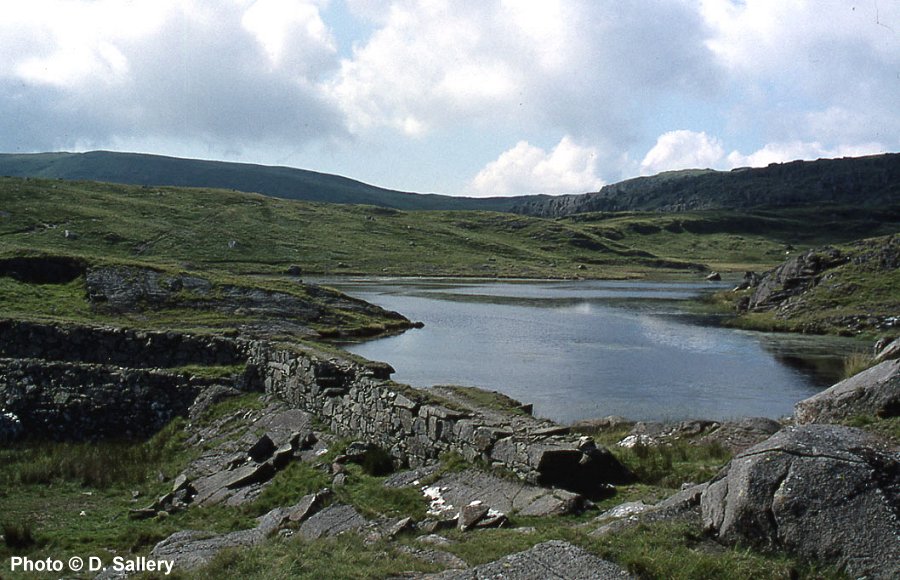
This
is Llyn Cwm Corsiog to the north of the quarry. It is a
purely artificial reservoir, created in 1899 to meet the increasing demands
for water power. The lake covers an area of nearly 8 acres and it
is impounded by two dams separated by a rocky outcrop. One of the dams
can be seen in the foreground. This lake and others in the area are now
used to supply a small hydro-electric plant in Tan y Grisiau.
The other
great attraction of water was, of course, that it was free. In an
area with one of the highest rainfall totals in the country it was often
embarassingly plentiful. Much of the harnessed water power was used
to remove large quantities of untamed water seeping into the underground
workings. A constant battle was fought to ensure the workings remained
dry and accessible. Ironically it also became common practice to
use abandoned and worked out chambers as further reservoirs.
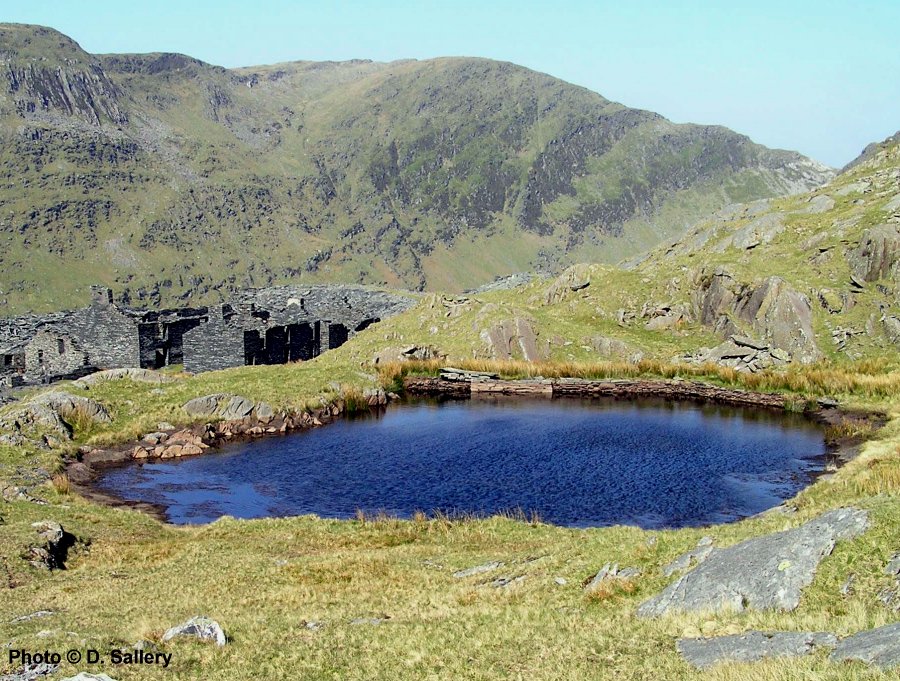
One of the smaller reservoirs built to supply the quarry.
It
was not all plain sailing though. Because of the height of the quarry
in relation to the surrounding catchment area it meant that there were
few readily available lakes to tap. The construction of reservoirs
and the supply of water to the ever demanding water wheels assumed an importance
to the quarry second only to the production of slate. There were
ultimately twelve reservoirs available to supply the quarry. Some
more successful than others. However, despite the complexity and
ingenuity of the supply system there were still times of drought when production
ground to a standstill through lack of water. The winter months also
brought problems when any prolonged period of frost would result in the
entire supply system freezing solid. Some of the lakes and reservoirs
remain today while the presence of others is marked by the collapsed and
decaying remains of dams and abandoned water courses.
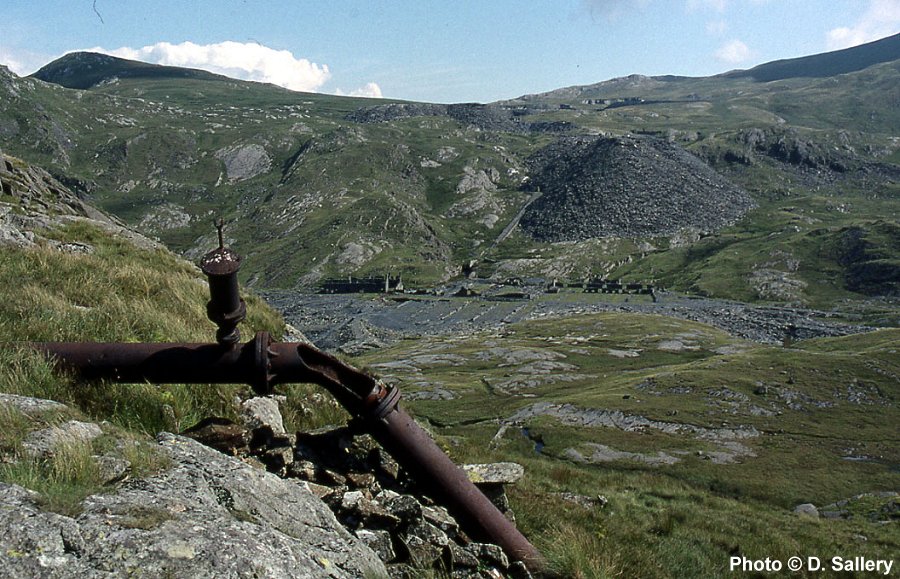
With
the quarry prominent in the background, the remains of the outlet pipe
from Llyn Clogwyn Brith can be seen here. This lake was natural but
its level was raised by construction of a dam which can still be seen today.
The main function of the reservoirs on the north side was to supply the
main mill and dressing shed on level 9. The water from this lake
was fed to Llyn Coed, the last link in the supply chain which lay below
in the centre of this view.
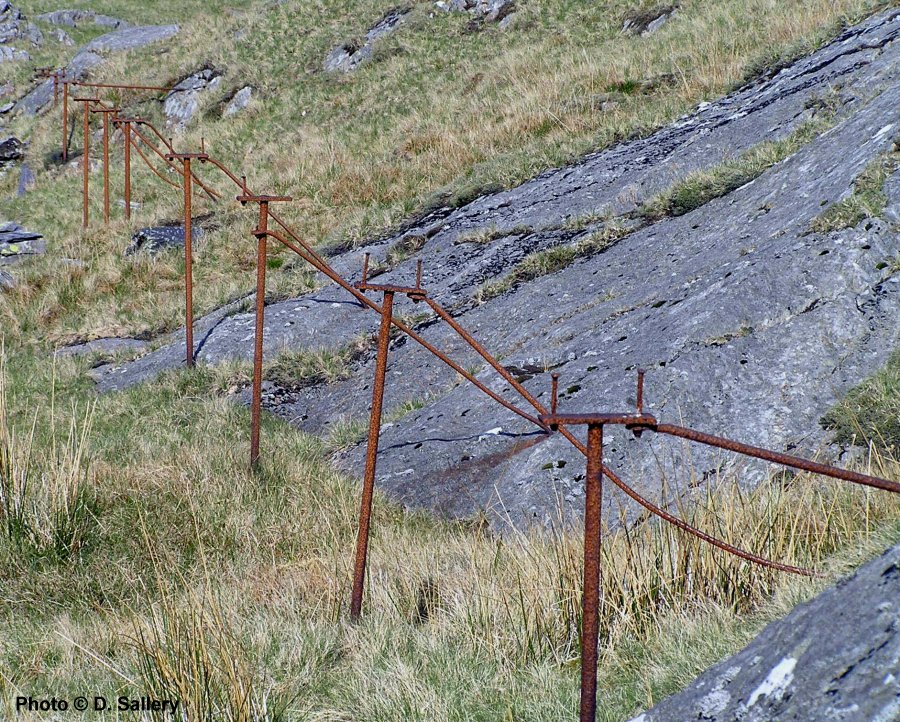
These metal supports would have supported a wooden channel along which flowed water from one of Rhosydd's many reservoirs to one of the quarry waterwheels.
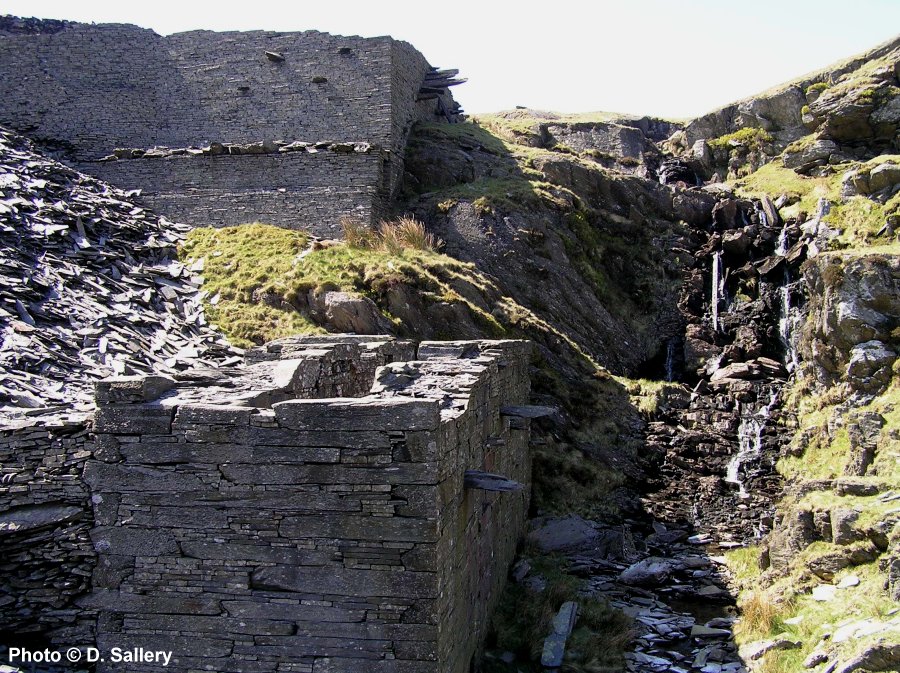
This
massive construction was built to hold a 40 foot water wheel . It may be
seen at the entrance to the quarry from Cwmorthin. The water supply to
this wheel would have reused the waste water from an existing waterwheel
supplying the main mill. Why a wheel was never installed here is
unclear but it was probably due to the economic downturn in the industry.
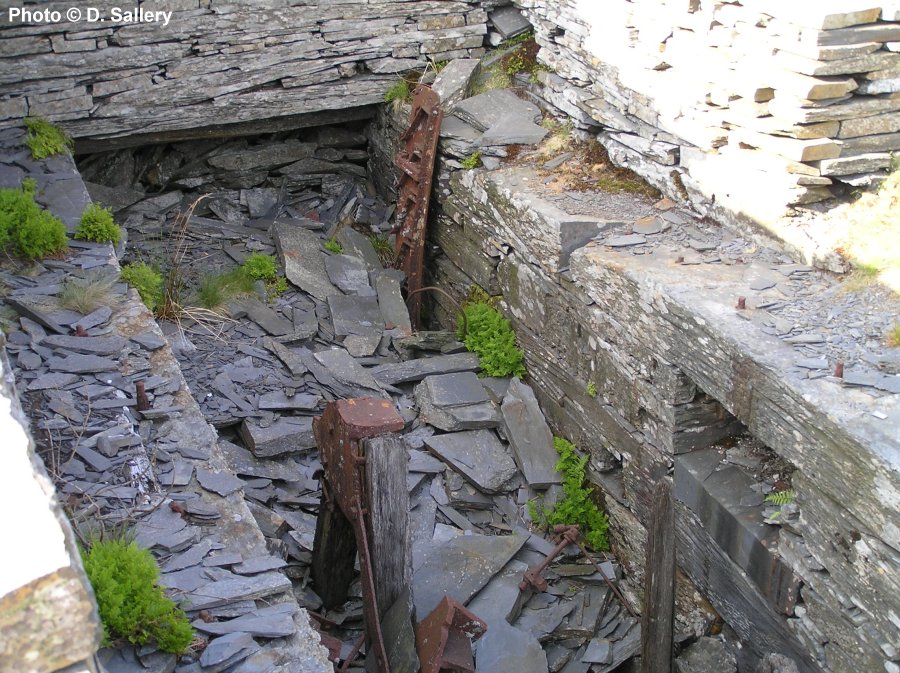
A
water wheel pit, a small remnant of the wheel remains.
Continue
to: Transport from and to the quarry